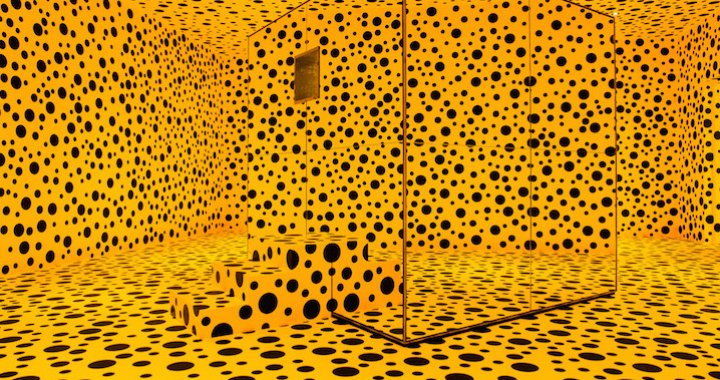
The most intriguing exhibition of 2015
31/12/2015
As the year was coming to a close, Arterritory.com asked several people in the creative industries to take a moment and look back upon their memories of 2015. We requested them to list what they thought were the four most intriguing events dealing with art and culture from the previous year.
With this roundup, our goal isn't to point out what you missed in the last year, but rather to encourage you to recall what you have accomplished... And think about why one exhibition stood out from the rest for you. We invite you to contemplate what new slices of artistic experience the past year has brought.
Daniela Arriado, Media Art Curator (Chile/Norway)
Every year brings a list of breathtaking events, reminding us of why we do what we do, why we love art… or just love being with art.
It is hard to choose the most intriguing exhibition because, thankfully, we see so many, but there is one that I would like to highlight, one which I recently experienced: the PAF Festival of Film Animation Olomouc, Czech Republic (Dec 3-6). There I met and witnessed a set of artists who explore and challenge the formats, creation methods and circumstances of film presentation. Displayed through and in between exhibitions and live audio-visual performance sets, I was taken on a journey into the world of the moving image, as created by talented artists like Greg Pope (UK), Jonathan Monaghan (US), Martin Arnold (AU), Samson Kambalu (MW), Takashi Makino (JP) and many more. Well curated by Martin Mazanec.
Visvaldas Morkevičius’ Public Secrets
Andrew Miksys, photographer (Lithuania/USA)
In Vilnius, I was very happy to see Visvaldas Morkevičius’ one night exhibition and book presentation, Public Secrets. Visvaldas financed his book and organized this event himself. The quality of everything was excellent and the exhibition in the dark theater space of Meno Spaustuve was refreshing. The photography scene in Vilnius is in desperate need of change. The old, conservative, Soviet-era photo union system still manages to dominate, even though they have zero new ideas and publish the same boring catalogs. A young photographer like Visvaldas is helping to push things in a new direction.
Marie Laurberg, curator and head of research at the Louisiana Museum of Modern Art
It might appear immodest to mention a project of your own, but I cannot deny the fact that my personal year was much devoted to a specific exhibition: Yayoi Kusama - In Infinity. This was the artist's first retrospective in Scandinavia; I curated it for the Louisiana, and it will travel on to Henie Onstad in Oslo, Moderna Museet in Stockholm, and the Helsinki Art Museum. For me, working on this show created an opportunity to engage in-depth with an artist whose unique voice opens up a completely different narrative through post-war art than the established art-history canons of this period. Kusama's art is emotional, obsessive, and profoundly personal. Her investigations of the concept of Infinity are really an investigation of personhood vis a vis the world as such – a brave and vulnerable questioning of what it means to be human in our modern time.
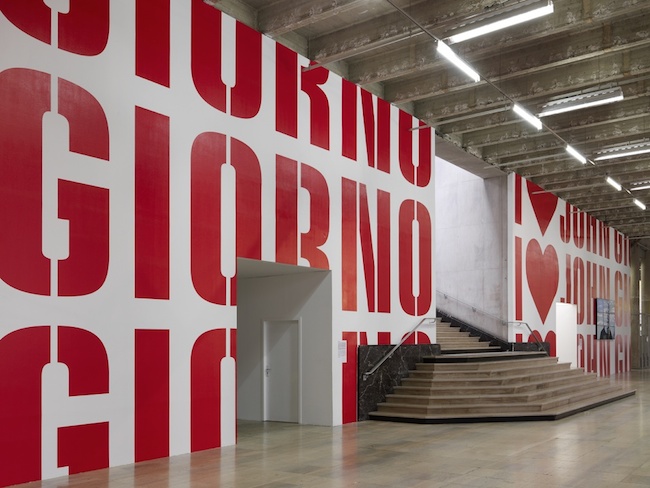
UGO RONDINONE : I ♥ JOHN GIORNO, Palais de Tokyo (21.10 2015 – 10.01 2016). Photo: André Morin Scott King
Eugenio Viola, Curator of Estonia's pavilion at the 56th Venice Biennale
UGO RONDINONE : I ♥ JOHN GIORNO at the Palais de Tokyo, Paris.
Milena Orlova, art critic, Editor-in-Chief of The Art Newspaper Russia
As ever, I was most impressed by the Venice Biennale. It is, after all, the only place where you can become physically aware of the global nature of the contemporary art world while also retaining the ability to evaluate the statement of each individual artist, often closely linked with the respective national context. I was very pleased to see Irina Nakhova link universal human existential experience with the history of her country in the Russian Pavilion. In the main programme of the Biennale ‘All the World’s Futures’, Okwui Enwezor evoked the theme of the Marxist legacy, so close to anyone who was born in the USSR – although it is exactly this aspect of the Biennale that left me somewhat sceptical: the Soviet school system with its endless verbatim memorising of the Marxist-Leninist canon has robbed me of any desire to explore this particular area of thought. At Enwezor’s show, I was much more intrigued by something completely different. I will take the liberty of quoting my own article entitled ‘The Venetian Capital’, published in The Art Newspaper Russia: ‘What I found really surprising was the abundance of pencil drawings featured at an art exhibition dedicated to the future – the simplest and most archaic technique imaginable. And we are truly speaking of a ‘battlefield pencil’ here, the most accessible and, let us give credit where credit is due, virtuosic weapon of an artist at a hotspot – or any spot at all – where they would want to capture the world around them or do some philosophising with a pencil in their hand.’
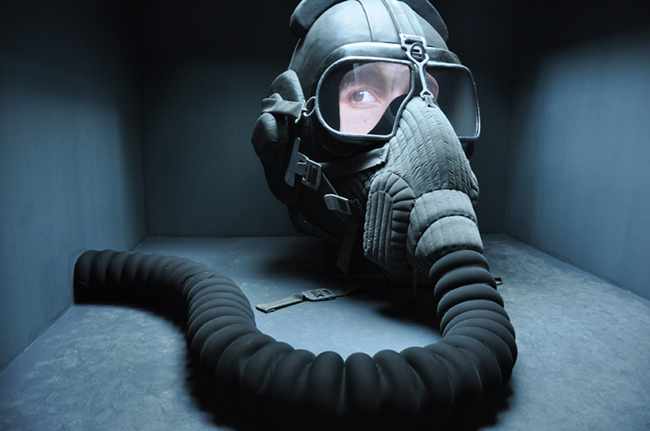
Irina Nakhova. The Green Pavilion. Photo: Ainārs Ērglis
Also, I cannot omit to mention the brilliant project by Fondazione Prada (both in Venice and Milan), ‘Serial Classic’, a witty take on the subject of copies, imitations, replicas and quotations in classical art. The exhibition demonstrated in a very convincing fashion that what we see as the area of post-modern art actually belongs to the category of eternal stories. Apropos of which, I would like to note that art foundations of big luxury brands, born as pure marketing projects, are beginning to compete quite seriously with regular museum exhibitions today.
Julijonas Urbonas, artist and designer (Lithuania)
I really enjoyed taking part in Threads: Fantasmagoria about Distance, curated by Nicolas Bouriaud, which is still running at the Kaunas Central Post Office in Kaunas, Lithuania.
Dr. Vytautas Michelkevičius, commissar and curator of Lithuania's pavilion at the 56th Venice Biennale
I would pick the Extended program of the Göteborg International Biennial for Contemporary Art (GIBCA), which brought up the regionalism question in the international art world as centralized/consolidated by the attention economy of biennalisation. 50 remote and rural art institutions, artists, groups and initiatives organized a network of ongoing events around Gothenburg and in the Västra Götaland region.
The most impressive artwork is levitating in the viewers mind gigantic horns of reindeer from Žilvinas Landzbergas solo show Crown off laying in the courtyard of Contemporary Art Center (CAC), Vilnius.
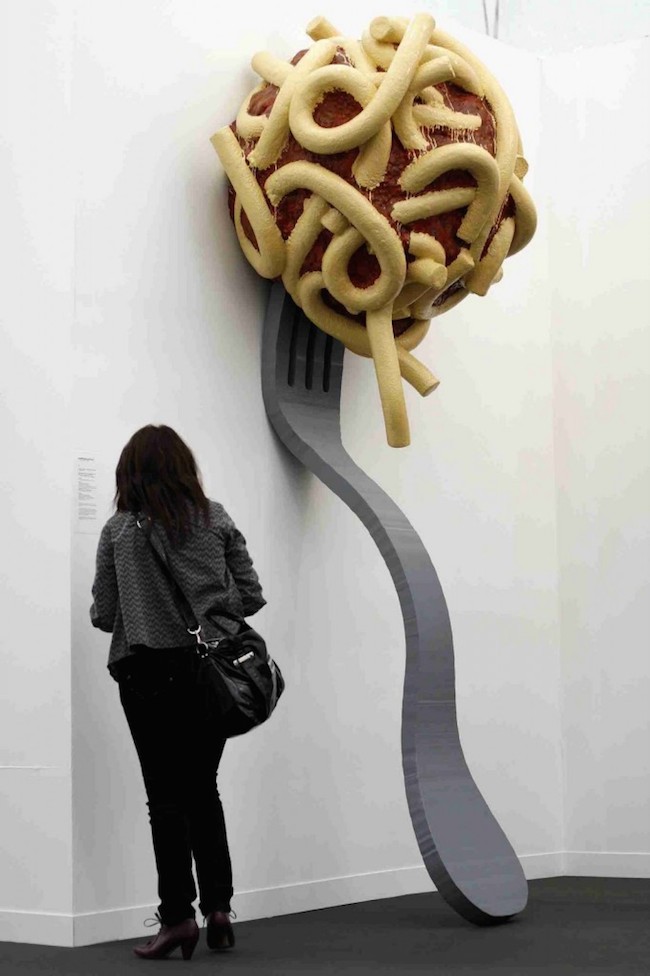
Germano Celant. Arts & Foods at Expo Milano 2015
Viktor Misiano, curator and editor of the Moscow Art Magazine
In 2015, I mounted three exhibitions and am quite satisfied with all three of them.
I would love to confess that they were the best thing that I saw during the year.
While it would be true, sadly, I cannot make an announcement of this sort.
I was very impressed by the solo exhibition of a young Moscow artist – but it does not feel quite right to name it, either. Public praise for a young artist by an art curator of some repute tends to provoke some not-quite-adequate interpretations.
What I am left with is Germano Celant’s ‘Arts & Foods’ exhibition as part of Expo Milano 2015. Funnily enough, I actually disliked the show more than I liked it. Nevertheless, despite the many weaknesses, it was an ambitious and witty project. I did not see anything commensurable with it (in every sense of the word) during this past year. Incidentally, I could mention a curatorial project that could compete with the Milan show – except it is linked with Celant’s name again. Therefore, let us stick with ‘Arts & Foods’...
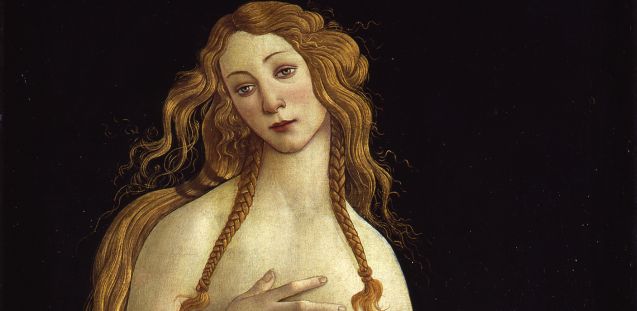
Sandro Botticelli. Venus, 1490
Inese Baranovska, art historian and head of the Decorative Arts and Design Department at the Latvian National Museum of Art
The exhibition The Botticelli Renaissance. 1445–2015, which I recently saw at the Gemäldegalerie in Berlin. It is an original reconstruction of the great Italian painter's legacy and influence; a peculiar journey back in time and space, that starts from the 21st century – in which Botticelli's images are regarded much like a brand – to the originals, made in the 15th century. A cooperative project executed by two of Europe's leading museums (various museums from nine different countries have loaned out their pieces), in the spring of 2016 it will travel to the Victoria and Albert Museum in London (05.03.16. - 03.07.16.).

Pedro Lopes
Dmitri Bulatov, curator (Russia)
Speaking of solo endeavours, I was most of all impressed by the Portuguese artist Pedro Lopes’ ‘Affordance ++’. It would not be an exaggeration to describe this technological project as revolutionary from the point of view of the emergence of non-human reality. As part of his project, Pedro Lopes built a portable device that, on the one hand, detects which object is making a contact with the user, and, on the other, is making corrections to (and controlling) the use of said object by the human being by means of dynamic electro-stimulation of the muscles. In other words, Lopes endows external material objects with a certain prefiguration of ‘will’. He invites us to see in them more than just ‘an extension of relations’ between subjects and objects (the way it was at the times of the ‘Internet of Things’) – rather, as a set of independently acting characters. I see it as a problem and a fundamentally new challenge: if the demands of the contemporary philosophy of technology – endowing objects with ‘the vote’ and creating the ‘Parliament of Things’ – was seen as ironic not that long ago, today, it is already reality, albeit one with a serious squint.
Kadri Uus and Andra Orn, founders of NOAR, an Estonian-based internet platform for art sales and information
In Estonia, that would be Prosu(u)mer, which took place in the context of Tallinn Photomonth ‘15. The exhibition, curated by artist David Raymond Conroy, dealt with the intertwined and sometimes reversed or ambiguous positions of producers and consumers, authors and users. For example, lifelike photos taken by users playing complex video games – using a virtual camera available to them within the game – were exhibited and accompanied with questions of whether we can call this art, and if so, who is the author in this context.
Also, the XII Baltic Triennial, which was held at the Vilnius Contemporary Art Centre (CAC), was remarkable. The whole building, including warehouses and corridors, was used as exhibition space. This gave people a totally new perspective, like an inside peek into the CAC house, and, of course, it also provided good insight on what is going on in Baltic art, both backstage and onstage.
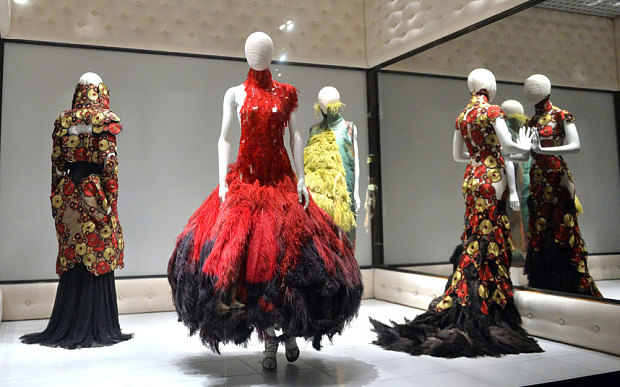
Alexander McQueen: 'Savage Beauty' exhibition at the Victoria & Albert Museum
Photo: Getty Images
Ieva Zībārte, architecture and design critic (Latvia)
In 2015, art became even more accessible in spaces outside of its regular locations of exhibition. Warhol's vision is as true as ever: everyone is a celebrity, everyone can call themselves an artist, and everything is art. In this context, I've also noticed that everyone is their own curator, and correspondingly, everyone creates their own art program – one which doesn't have either more prestigious (the Venice Biennale, Art Basel Miami Beach) or less prestigious (a local artist's exhibition in the countryside) events. Everything has become equally “important” and “high-quality”. Now one can become acquainted with art in bars and hotels, so it follows that museums and galleries now have to think about how to compete with bars and restaurants in this sense.
What has stayed best in my memory from 2015 is the Alexander McQueen show Savage Beauty, at the Victoria and Albert Museum in London.

© The State Hermitage Museum
Olesya Turkina, curator and art critic (Russia)
2015 was a year of many good art exhibitions. However, I cannot single out one that would have broken my heart – as it sometimes happens when you find yourself at an art show, wishing dearly that you were the one who had made it. And so this is all about good and very good exhibitions, one of which was Zaha Hadid’s show at the State Hermitage, incorporated extraordinarily well into the complex interior of the Nicholas Hall. Also, the wonderful Pavel Pepperstein’s ‘Future Enamoured with the Past’ at the MAMM, all submerged in the darkness of distant eras, and the new video by Michal Rovner at the same venue. An excellent job was done with Louise Bourgeois’ ‘Structures of Existence: The Cells’; the Garage Museum of Contemporary Art was the first to bring such an extensive collection of her large-scale works to Russia. And ‘The Mark of Malevich’, curated by Tatiana Goryacheva, at the State Tretyakov Gallery on Krymsky Val. This moderately-sized exhibition of Malevich’s prints revealed the experimental nature of avant-garde art and contributed to marking the centenary of Russian Suprematism.
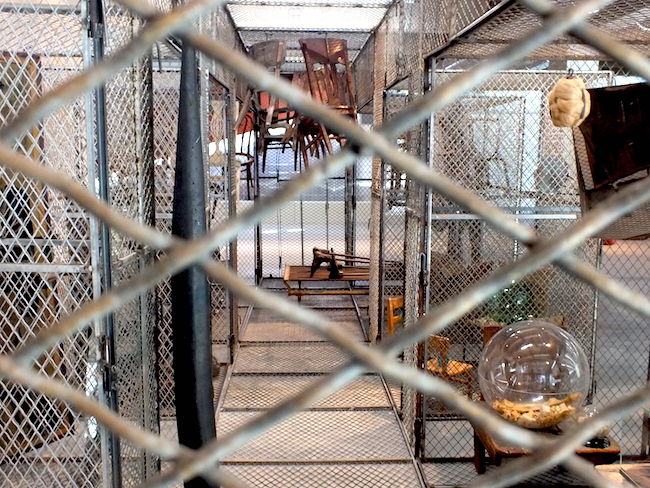
Exposition view. Louise Bourgeois at the Garage. Photo: Sergey Khachaturov
Valentin Dyakonov, art critic and curator (Russia)
I would say, Louise Bourgeois at the Garage. Viewers and artists alike can learn a lot from this exhibition. To speak a contemporary language, you have to know the letters first. Another project that deserves a special mention is ‘Watch Me Move’, an exhibition dedicated to the history of animation, mounted by the London Barbican arts centre and housed at the VDNKh.
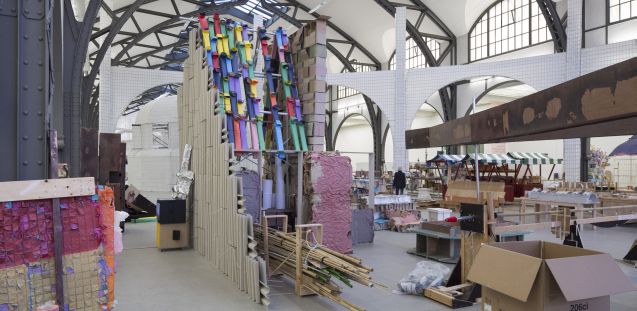
Michael Beutler. Moby Dick, 2015, Installationsansicht, Hamburger Bahnhof - Museum für Gegenwart - Berlin
© Staatliche Museen zu Berlin, Nationalgalerie / Thomas Brun
Raul Keller, Estonian artist
A large scale Michael Beutler' exhibition that I saw in Hamburger Bahnhof in Berlin. Art as process, as total installation and experience, I liked it quite a lot.
Ryoji Ikeda ‘Sypersymmetry’. This just opened in KUMU, Tallinn. What makes it intriguing for me is that first of all it's very well executed and the concept is very clear, however I'm having hard time emotionally connecting to it. It's overwhelming but very cold.